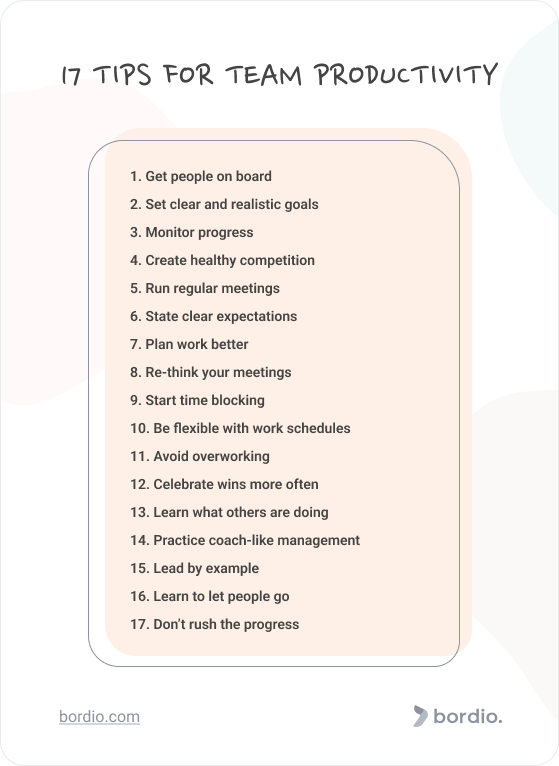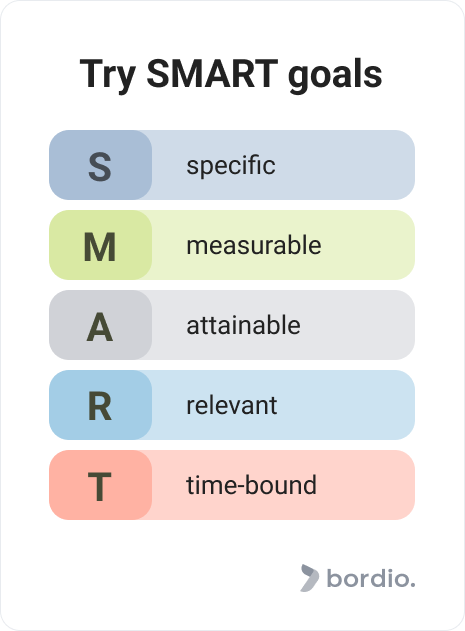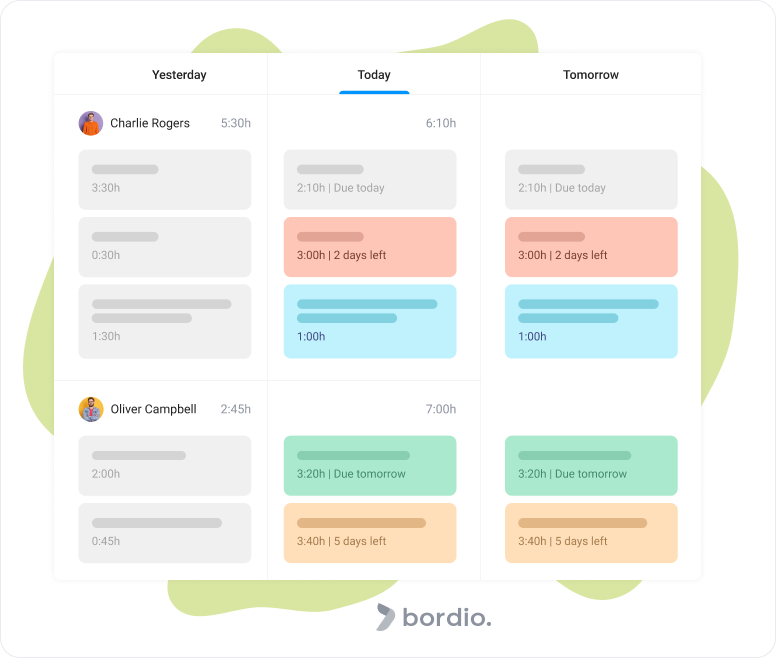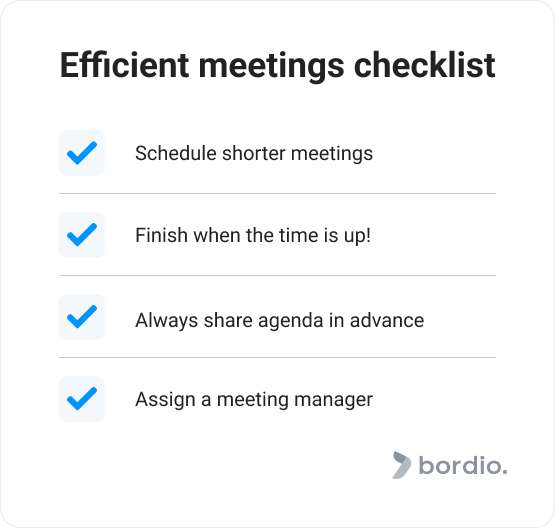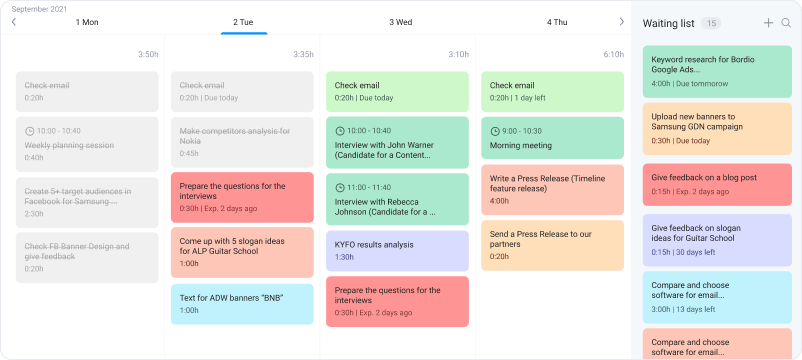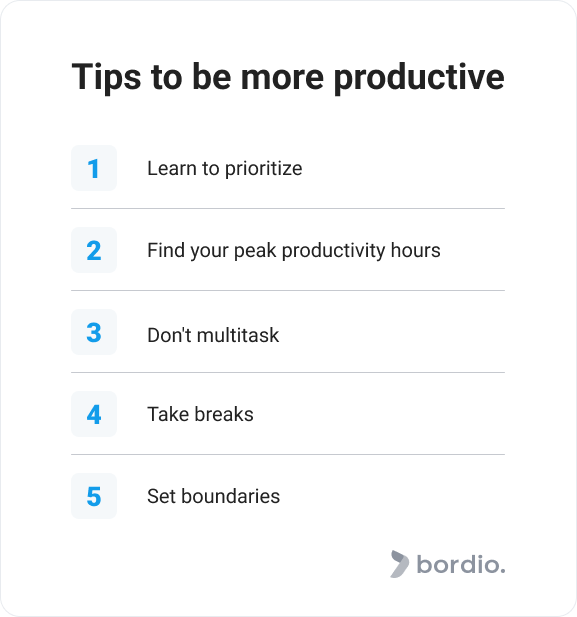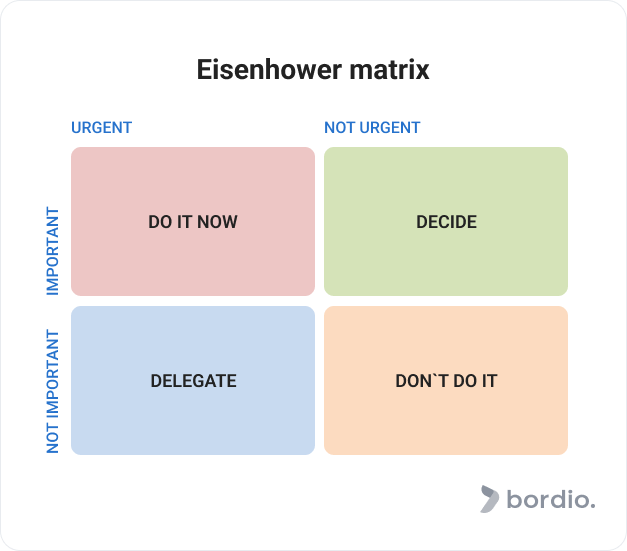Productivity is an evergreen topic in our personal and professional lives.
No matter how many productivity books you’ve read, how good your online project management tool is or productivity tips implemented, there is always something you can improve and optimize.
When it comes to team management, team productivity is an especially hot issue because it has a direct and heavy influence on how much work gets done and what kind of quality we can expect with the outcome.
Being productive is about taking small steps, making the right decisions, and being consistent. In this article, we are going to share sustainable tips that can boost your team’s productivity and keep it high.
#1 Get people on board
There’s only so much you can do if your team is not interested in becoming more productive. Find out what the team is missing to reach their maximum productivity. Maybe they need more resources, maybe you are understaffed. Once basic needs are all covered, move on to promoting your company’s goals and encouraging the team to work towards them with honest and clear communication.
#2 Set clear and realistic goals
Sometimes it’s not about the team being unproductive but the goals being unrealistic. Try setting attainable goals that are only ever so slightly above what seems possible.
The less clear and specific the goals are, the fewer hours employees spend actually working. Instead, they are busy decrypting what they’re supposed to do, and procrastinating because the task seems unbearable.
How you set and define the goals will determine the results you can achieve.
#3 Integrate progress monitoring
Progress tracking metrics are one of the best productivity tools for managers and individuals alike. They create a stress-free and positive work environment where high-priority tasks (and all other tasks really) are closely monitored and are worked on in a timely manner. So you need some simple time planner for team. We might recommend such programs as task planner free and free time manager by Bordio, these would help you to plan your schedule.
Here are examples of the progress monitoring tools that one can integrate to create a productive environment:
- Dashboards with individual and team progress to stay on top of things and increase productivity through a little bit of healthy competition.
- Kanban boards or Scrum boards to visualize the work process and gamify working through to-do lists.
- KPIs or key performance indicators that can be set for the entire team or team members to help them achieve their personal work-related goals.
- Milestones are mostly used in project management, but they are great for all kinds of work-related activities. Milestones are not the same as goals, but rather significant achievements on the way to reaching the goals. It means that they are not directly what the team is evaluated on, but they allow to get a sense of achievement and be a cause of little celebrations, – both very important for team efficiency and personal productivity.
Tip: The basis of any progress tracking lies in using the right productivity and time management solution. Free online calendar planner by Bordio, for example, allows users to log both tasks and events, log their total workload for each day, and keep all unscheduled tasks in a separate Waiting List that is a single point for all your mind-sweeping sessions and ad-hoc brainstorming. For different situations, besides the universal online planner, you can also try tools from Bordio such as simple weekly schedule maker or virtual planner free.
#4 Create healthy competition
A little healthy competition will not hurt anyone. If possible, create a competition between linear employees who share the same position. For example, it works great in sales where the best sales representative of the month gets an impressive bonus, motivating everyone to compete and perform as well as possible.
We already discussed dashboards in tip #3 – use them as visual tools to promote competition and see how well everyone is doing.
#5 Schedule weekly performance & planning meetings
Regular check-ins with your team have paramount importance when it comes to strengthening productivity. Especially if some of your team work remotely or in hybrid mode.
Schedule recurring sessions to everyone’s free weekly planner. In these meetings, discuss employees’ performance during the last week and the plan for the next week. When people know the plan, they automatically start performing better.
Ps, if you manage a hybrid team and feel that not everyone is putting in their best effort, read our guide on establishing accountability in a hybrid workspace for helpful tips.
#6 State clear expectations
Take the effort to communicate your expectations to each team member.
Sometimes we forget that things that are obvious to us are not as clear to everyone else. If you see your team productivity going down, it very well may be that they do not fully understand what is expected of them.
There are different techniques that you can use to ensure your expectations are fully received and processed. Try asking employees to explain how they understood your key targets and expectations of them. You might be better off doing it individually with every team member at one-on-one meetings so that they feel less pressure to say something in front of everyone.
#7 Improve work planning
You can’t make your workplace automatically productive once you’ve decided that it needs to be productive. There is the groundwork that has to be done first, for example, reviewing and improving your processes, such as work planning.
The team’s capacity may as well be blocked by other team members, co-dependent tasks, and conflicting projects. Maybe you can’t fix it entirely, but at least you can plan work better and reduce the number of such cases.
As a first step, add transparency. For example, Bordio allows you to view everyone’s digital daily planners with total workload and add co-dependencies on the go.
It means that next time you are planning a project or a group of tasks, you can easily check that there are no issues and delays.
#8 Review your meetings policy
Not every meeting needs to turn into an email, but some of them can be optimized.
The great lifehack is to schedule shorter team meetings. For example, make it 45 minutes instead of one hour. And when the time is up – cut the meeting off! That way everyone will learn to respect the timeframes and also be efficient during discussions and brainstorming.
It can be tricky to follow the new schedule at first, so make sure you have a designated meeting manager who checks the time and makes sure you move through the agenda.
And by the way, make a rule to have the agenda sent out to everyone together with the invite or at least one day prior to the meeting. It is about respect for one another but also productivity. Let the people have the chance to prepare for the upcoming session and come up with their suggestions and concerns, instead of being caught off guard.
Tip: Try Daily Stand-Up meeting that Scrum teams use. It’s literally a 15-minutes standing meeting where the team gets on the same page by sharing their updates, roadblocks, and current focuses.
#9 Introduce time blocking
We at Bordio are huge fans of time blocking. Time blocking is essentially reserving a specific time slot in your calendar for specific tasks.
In Bordio’s free online to-do list, however, time blocks are much more advanced than that. They can be created along with new tasks and allocated across the employee’s calendar. For example, if there is a task to create a new UI prototype, and the task is estimated to take 5 hours, the manager (or the designer themselves) can set 2 different time blocks within the task: one for 2 hours, another one for 3. And it would be impossible to complete the task before the time blocks are completed too.
Time blocks are great tools to improve team efficiency because they stimulate team members to initiate work in advance, instead of rushing through the job just hours before the deadline. That way, if the task turns out to be more difficult, or requires additional information, the employee will have plenty of time at their disposal, and the deadline will not be missed.
#10 Adapt alternative working schedules and formats
If your team does not absolutely have to be in one office from 9 am until 5 pm, then perhaps you can offer alternative formats of work.
The pandemic has taught us that workplace productivity is not directly linked to sitting at your desk with your boss roaming around. It means that hybrid and remote work can easily be incorporated into many companies.
Nobody is productive for 8 hours straight, and countless reports say that office workers tend to waste up to half of their working day. Perhaps a better way could be dropping the one-chunk work day and substituting it with multiple smaller blocks (kind of like with time blocking). If someone enjoys waking up early, they can start their day at 7 am and work until 11 am. Then take a break to hang out with kids or work out, and come back to work at 2 pm.
After all, if the work gets done well and on time, who cares if it’s done from a coffee shop at 3 pm or an office at 10 am?
#11 Ensure your team is not overworked
As you integrate new work styles, or even with traditional 100% office-based employment, make it a priority to watch out for overwork and late nights.
Overworking yourself happens unnoticeably. You do it once, and then it quickly spirals out of control leading to burnout. To support that, prohibit team members to send messages and making calls to one another after a certain time.
Check that your team doesn’t work on weekends and takes vacations and time-offs if sick or for important family events.
Tip: Use overall estimated time in Bordio to have an instant glance at each team member’s current workload.
#12 Celebrate wins
Most people want to feel valued and recognized.
Imagine you’ve been working hard for months, crunching difficult projects and tasks, only to be constantly getting more and more work. With zero gratitude. No matter how motivated you are, you’ll probably become less excited about work and less productive, as a result.
We are used to the idea that bad actions have consequences. Let’s broaden this paradigm by including positive consequences for good actions too.
#13 Understand the work your subordinates are doing
If you’ve grown with the company, you probably already understand how everything works in some capacity, but as your managerial track record grows, you become much less immersed in the details and only have a high-level overview of the work others are doing. And then, if you are a new manager joining the business, the nuances and the unspoken rules would be a total surprise to you.
So, if you want to build productive teams, it would be a good start to get an understanding of what their work is really like. Try to swap sits with them for a day or a week, and ask them to guide you through some of the tasks.
Such a practical experiment will give you much more insight and creative ideas than 20 meetings just talking about someone’s work would.
#14 Adapt the coach approach
Even though your job as a manager literally means bossing people around, try to be gentle with that and be a mentor and a coach, in addition to your manager role.
How to do that?
- Don’t jump to conclusions before hearing the employee’s side or opinion.
- Step back occasionally and let team members solve the issues and complete important tasks on their own.
- Ask the right questions that encourage the thought process and guide the employee.
- Encourage initiative and support the team when they come up with something.
Rule of thumb: When you reflect on your managerial practices, think if they create a healthy work culture or if they can endanger it. We are all human, and even managers can make mistakes. That’s okay, but we need to learn and move on from our experiences.
#15 Lead by example
The same tricks that work in parenting work with management. Your co-workers will watch you and copy your behavioral patterns. What you say and recommend is not going to help anyone unless you practice what you preach and turn into a good example yourself.
So make a list of the target team’s strengths that you want to develop among them, and start improving yourself too in parallel with them.
For additional inspiration, we recommend learning more about different management styles. They all have different perspectives on the same tasks and will help you think outside the box as a leader.
#16 Learn to let people go
Being a manager is not always pleasant. And perhaps the least enjoyable part of the process is letting people go.
It is the last resort that, of course, should be taken only after much work has been done to get to the root causes of poor performance, conflicts, or anything else that makes the employee unfit for the team. Always schedule meetings and private chats with someone before firing them to identify what is going on. It might as well be that their insufficient performance is a result of obstacles outside of their control.
So, if you’ve determined team members who underperform and don’t do their work well, and nothing can change that, the only option you have left is to fire them. Some professionals joke that you are not truly a manager until you’ve fired someone because of how challenging this process is.
Preparing mentally to part ways with an employee
While it is definitely easier said than done, firing can be a neutral, if not pleasant, experience. It’s not necessarily a bad thing. Sometimes employees are not in their right places. Maybe they don’t see themselves in this career path but are too afraid to quit, or they would simply thrive under different circumstances. The faster such employee is removed from the environment that doesn’t help them thrive, the better it is for their mental health and career prospects. And the better it is for the rest of the team.
Let’s say you lead a marketing team and your SMM manager always comes to the office demotivated, fails to complete their work on time, and spreads negativity among everyone else. The team will quickly be affected by such an employee, causing a fall in the team’s productivity and overall employee engagement.
Remember to take your time with firing and really work on making things right first. However good the firing may be in the long-term, it will be extremely stressful (and sometimes life-altering) for both parties in the short term. Such decisions can’t be made lightly and they can’t be rushed.
Tip: In some situations, the manager can reach out to other team members to ask for their feedback and insight before making the final decision. It can be very helpful and eye-opening, but also dangerous for the team if they start “sharing the news”. So be careful with that and simply ask other team members for feedback, not indicating that you are unhappy or plan on firing someone.
#17 Don’t rush progress
The fast-paced nature of the world we are living in pushes us to always achieve more, jump higher, and run faster. Yet, changing the dynamic in your team and making it more productive takes time. You can’t fast-track to a sustainable and long-term change. So stay focused and take it one day at a time.
Bonus tips to share with your team to set them up for success
Until now we talked about the ways a team leader or a project manager can improve team productivity.
Next, we’d like to share some tips and recommendations that you can pass on to your team members to use personally. The chain is only as strong as its weakest link, so the more productivity techniques and tools your employees master to boost efficiency, the better.
In addition to the bonuses below, we recommend checking our top lists with best productivity books and best project management books.
Bonus tip 1: Learn to prioritize
Our entire to-do lists are never all important and urgent, even if we think otherwise. Start with the Eisenhower matrix and see where it gets you.
Also, share our task prioritization guide with everyone for more detailed insight.
Bonus tip 2: Find your most productive hours and use them
Listen to your inner clock and pick the most productive hours to do the critical work. If you know that you are most creative early in the morning, then change up your routine to accommodate that.
Bonus tip 3: Forget multitasking
Once and for all – multitasking doesn’t work. What your brain is doing, it’s switching back and forth between the tasks, resulting in worse focus, longer hours to complete the job and more mistakes along the way. You can allocate tasks with the help of work management platform.
Bonus tip 4: Don’t skip breaks
Breaks re-energize you, boost your mood, and help get creative again. Anyone skipping lunch and quick breaks is doing a disservice to themselves. We need rest to be productive and creative.
Bonus tip 5: Learn about and practice boundaries
Learn about healthy boundaries and practice them to avoid overstretching. Don’t overcommit and underdeliver. Learn to say No.
Final thoughts on improving team productivity
Team productivity is not just a task for managers who have nothing better to worry about.
Business costs associated with low productivity levels can skyrocket over time, as employees will be wasting more time, becoming disengaged, and making mistakes. That’s why team productivity should always be on the managers’ agenda. In order for the business to be productive and the work to go well, you need to delegate responsibilities and transfer, for example, marketing duties to a special startup marketing agency.
And remember – it takes two to tango, so as you are raising concerns or sharing advice, make sure you too follow the productivity tips you recommend.

